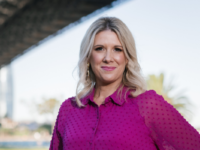Kate Williams has grown her start-up, Retreat Yourself Box, 300 per cent in the last 12 months and it is set to make $2 million in the new financial year. We asked Kate about the marketing secrets to such success.
ISB: How has technology helped grow the business?
KW: Due to the complex nature of our operations – from ordering, to recurring subscriptions, to inventory management, shipping and warehouse logistics – we’ve had to use all sorts of different tech platforms to streamline these processes and simplify the multiple moving parts that this business presents.
Technology has also been an integral part of our growth, with social media being our primary platform to build our brand and market the business. Learning about the power of digital marketing and maximising Facebook advertising has been huge for us, too.
ISB: What marketing avenues have you found work the best and why?
KW: Our main marketing avenues have been word of mouth/customer-generated reviews and content, influencer marketing and paid advertising. We find that these things together have been the recipe for our growth and success so far. I don’t think a business could see sustainable and exponential growth using one of these channels independently. The reason for this is because the world of e-commerce has become so overcrowded with new businesses and people are overwhelmed with choice. The decision-making process from a consumer journey point of view is becoming increasingly long, with the process from brand awareness stage to deciding to purchase being longer than ever before. With so many new brands popping up all the time, consumers don’t know who to trust and I don’t blame them! Consumers want to buy from brands that they believe in and ones they can trust.
Therefore, doing paid advertising alone isn’t necessarily a good strategy unless you have “social proof” of your product, and influencer and word of mouth marketing isn’t as easy to measure, as you don’t always have access to accurate analytics.
We have found that the combination of marketing strategies mentioned above has allowed us to build a trustworthy, robust brand and also have measurable data so we can see direct ROI on campaigns.
ISB: What advice do you have for start-ups?
KW: If you want to start a business but have no idea where to begin, think of your biggest pet peeve and create a solution to that problem. People need more solutions to their problems, not more products.
“If you want to start a business but have no idea where to begin, think of your biggest pet peeve and create a solution to that problem.”
Then, just start! Ask questions, be vulnerable and reach out to as many people as possible (even if you don’t know them – people love to help!).
It’s also vital you learn your numbers! I started this business as a passion project and was forced to learn my numbers a couple of years ago, which became a pivotal moment in the business success. I now use these numbers and data to forecast where we’re going and dictate every decision we make.
ISB: What mistakes have you made along the way that you have learnt from?
KW: Where do I start!? There have been a lot of mistakes along the way, and there’s not one that I would change. Mistakes are all part of the journey and are a crucial part in learning. I actually think one of the biggest things I’ve learnt is to not let mistakes ruin your confidence or knock you down, but instead look at them as stepping stones to becoming better and stronger than before.
ISB: What is your opinion on membership business models and subscription-based models?
KW: Subscription-based models are the way forward – people are time poor and are looking for ways to get the products they want without having to think about it.
ISB: Why do you think the business has grown so much?
KW: There are multiple reasons for our growth; however, a huge factor has been our focus on community. While we have leveraged digital marketing as a means for growth, which is easily measurable and produces tangible ROI, you cannot underestimate the effectiveness of word of mouth. If you have a good product and nurture your community, growth is a by-product of this.
Being a subscription business, another huge growth factor is the importance of customer retention. If you’re retaining a customer, you do not have to pay to acquire them every time, so we’re very much focused on providing what our community wants and nurturing them along their journey to wellness so that they stay loyal to the Retreat Yourself brand.
In saying this, we’re actually not just a B2C business. A huge part of our model is actually B2B. At the moment, with our subscription boxes being our main product offering to customers (which are compiled of products from other people’s brands), we need to ensure we build strong business relationships and have a quality offering to give them, too. The business model would not be sustainable if we were asking brands for thousands of products with no way to measure ROI, so we’re very much focused on gaining tangible results for all brands that have their products feature in our boxes. Essentially, we act as a mass brand awareness, exposure and marketing vehicle, where the brands have their products put into the hands of a very targeted consumer. We also ensure that there are multiple ways that they can measure ROI from the partnership.
Retreat Yourself will continue to grow exponentially year on year as we introduce additional revenue streams. While our focus is very much on vertical growth right now, we will be expanding horizontally over the next few years. Retreat Yourself will become much more than just the boxes and will become more of a “wellness hub”. Watch this space.
ISB: What trends do you forecast for the business and wellness industry as a whole?
The wellness industry as a whole is currently a $4.2 trillion global industry, which, according to the Global Wellness Institute, has been growing 6.4 per cent annually for the past four years and has no sign of slowing down.
We have already started to see a huge switch from a diet and fitness approach to a more holistic approach, and I believe that this will only continue to grow.
We will see more and more corporates implementing “wellness programs” as people start to recognise that wellness is a necessity and not just a “nicety”.
The global corporate wellness marketing is forecast to grow at an annual growth rate of 8.6 per cent, reaching a valuation of $86 billion by 2025, which supports my forecast.
This story first appeared in issue 26 of the Inside Small Business quarterly magazine.
















